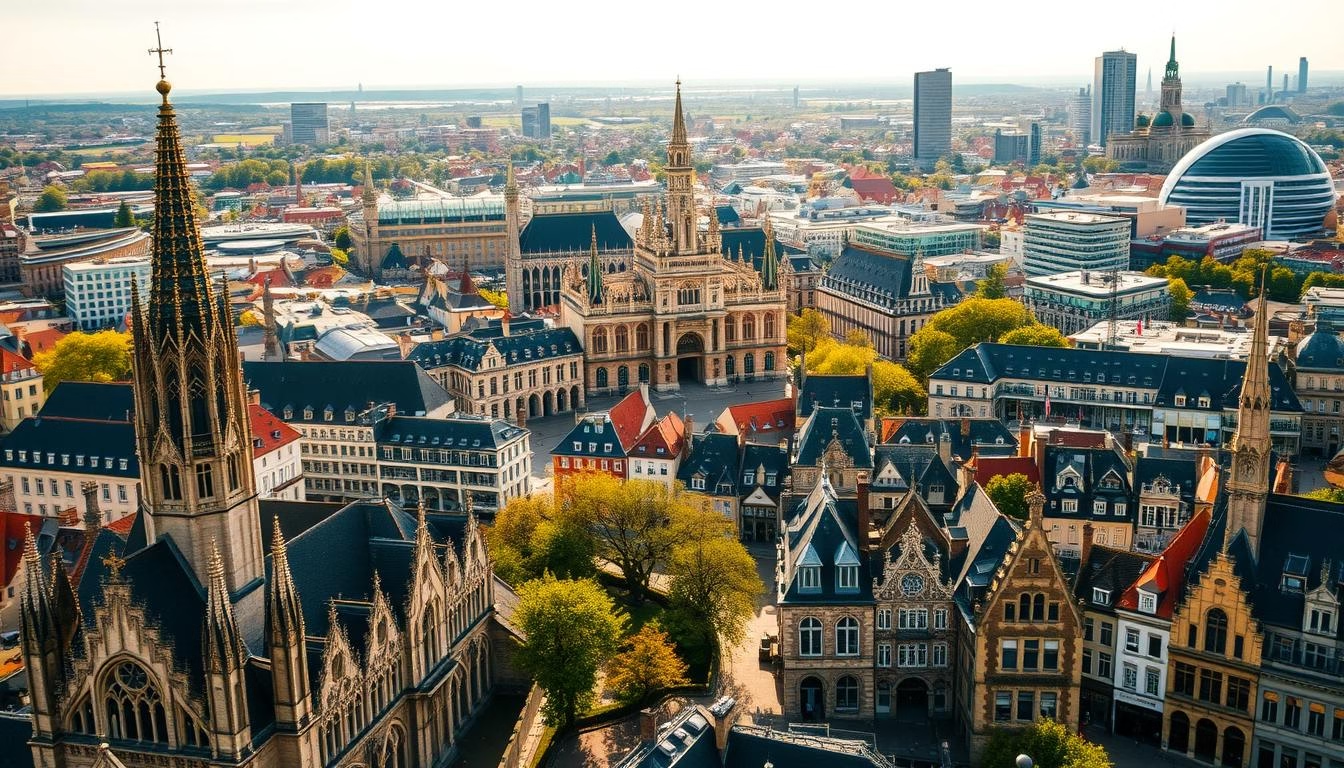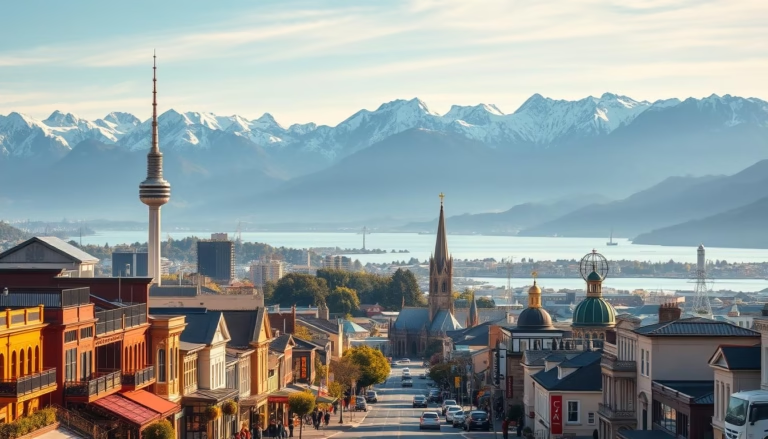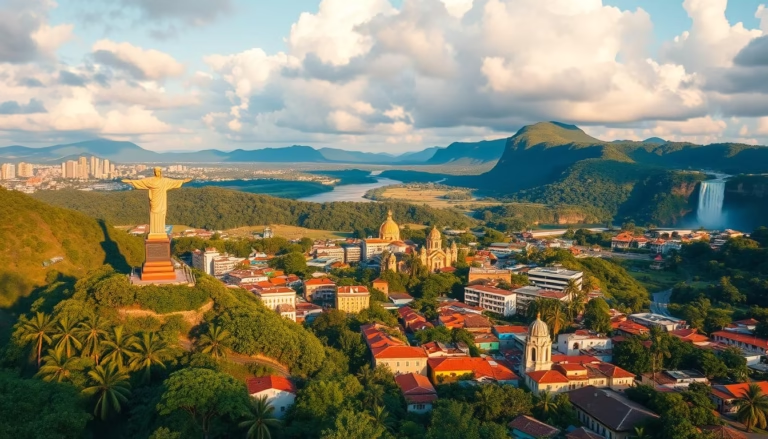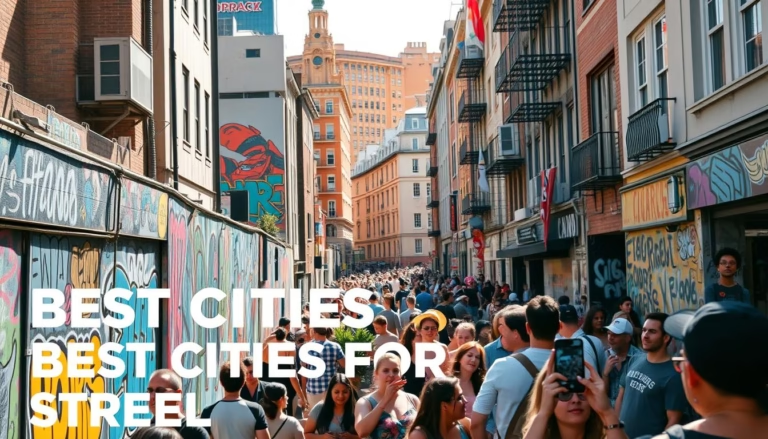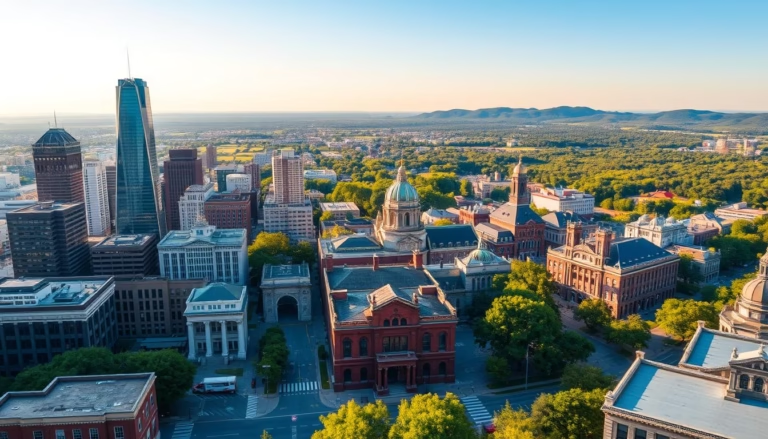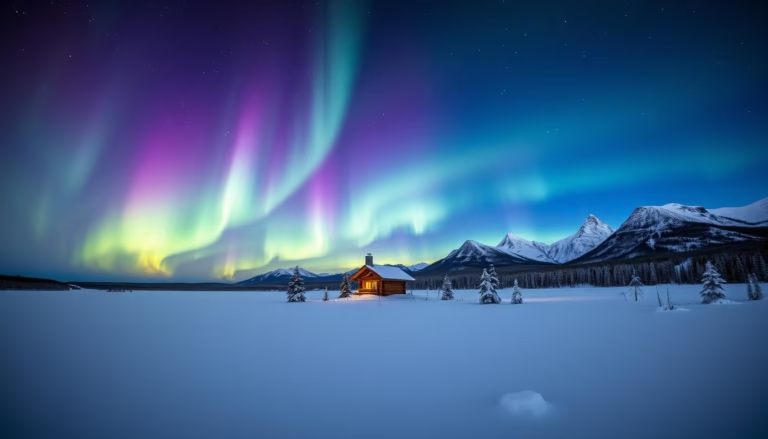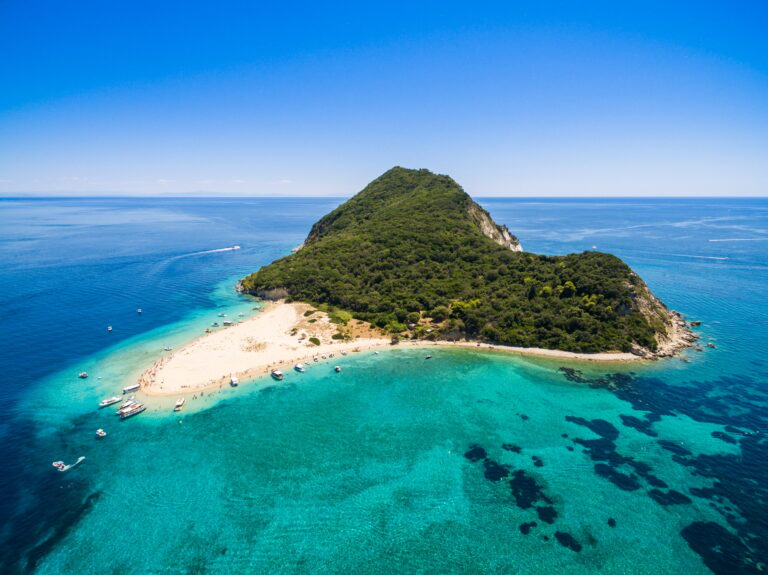Best Cities to Visit in Belgium: Must-See Destinations
Did you know Belgium has more castles per square mile than any other country? This small nation packs medieval charm, culinary wonders, and cultural diversity into a space smaller than Maryland. Yet 63% of American travelers skip it for flashier European neighbors.
What they’re missing is extraordinary. Picture cobblestone streets lined with Gothic architecture one hour from cutting-edge fashion districts. Taste world-famous chocolate beside family-run breweries crafting beers for centuries. Wander through art museums holding Renaissance masterpieces and surrealist oddities.
The country’s bilingual heritage creates two distinct worlds. French-influenced Wallonia offers forested hills perfect for hiking. Dutch-speaking Flanders preserves medieval market squares frozen in time. Both regions connect via efficient trains – you could breakfast in Brussels, lunch in Bruges, and dine in Dinant.
Key Takeaways
- Compact size enables visiting multiple destinations in one day
- Blends French and Dutch cultural influences seamlessly
- Historic towns rival fairy-tale storybook settings
- Culinary scene spans from street fries to Michelin stars
- Modern cities contrast with preserved medieval architecture
- Efficient public transit simplifies regional exploration
Introduction to Belgium’s Hidden Gems
From Roman roads to Art Nouveau facades, Belgium packs 2,000 years of history into a country smaller than New Jersey. This crossroads of Europe reveals surprises at every turn – if you know where to look.
Overview of Belgium’s Rich Heritage
Three powerful influences shaped Belgium’s identity. Celtic tribes laid the foundation, Romans built trade routes, and medieval guilds created wealth. Today, 13 UNESCO World Heritage sites tell this story, from Bruges’ canals to Brussels’ Grand Place.
| Region | Cultural Signature | Must-See Heritage Site |
|---|---|---|
| Flanders | Medieval guild halls | Bruges Belfry |
| Wallonia | Renaissance castles | Dinant Citadel |
| Brussels | Art Nouveau townhouses | Horta Museum |
Cultural Diversity and Compact Geography
Belgium’s linguistic divide creates fascinating contrasts. As local historian Marie Claes notes:
“Crossing from Flanders to Wallonia feels like entering a different country – different language, architecture, even beer styles.”
The nation’s small size means you can experience these contrasts effortlessly. Morning walks through Dutch-speaking Ghent’s medieval core lead to French-style lunches in Namur. By afternoon, hike Ardennes forest trails once trod by WWII soldiers.
This blend extends to the table. Sample crispy Liège waffles near German-border bakeries, then savor French-inspired waterzooi stew in Ghent. Every region adds flavors to Belgium’s cultural recipe.
Explore the best cities to visit in belgium
Navigating Belgium feels like flipping through a living storybook where every page reveals new adventures. Compact distances mean you can sip morning coffee in Brussels’ art nouveau cafés and enjoy sunset canal views in Bruges – all in one day.
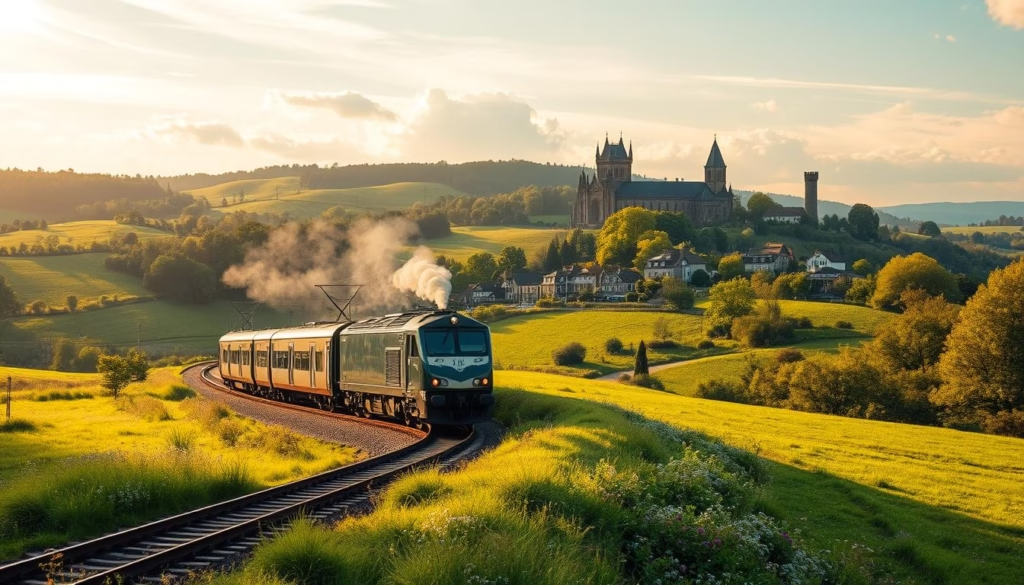
Local Favorites and Timeless Charm
Beyond postcard-perfect spots lie hidden treasures adored by locals. Durbuy, officially the world’s smallest city, enchants visitors with cobblestone alleys and cliffside hiking trails. Dinant’s riverside cliffs cradle a 19th-century citadel, while De Haan preserves Victorian beach villas frozen in time.
University hub Leuven buzzes with youthful energy amid 15th-century architecture. For ultimate relaxation, the thermal springs in Spa have soothed travelers since Roman times. Each destination radiates distinct personality – proof that Belgium’s true charm lives in its smaller towns.
Effortless Travel by Train and Road
Trains whisk travelers between destinations faster than you can finish a speculoos cookie. From Brussels, medieval Ghent sits 35 minutes away, while Antwerp’s fashion district shines just 45 minutes northeast. Most routes run hourly, making spontaneous day trips effortless.
Road trips reveal another layer of beauty. The Ardennes region serves winding drives past stone villages and misty valleys. As train conductor Piet Vandenberghe notes:
“Our network turns cross-country exploration into a stress-free joy – no seat reservations needed, just hop on and go.”
Whether by rail or car, you’ll discover why this nation tops European travel efficiency charts. Pack light, move freely, and let the journey become part of your Belgian story.
Capturing History and Medieval Architecture
Step into Belgium and time bends beneath your feet. Centuries-old stonework whispers stories of knights, merchants, and artisans who shaped Europe’s cultural crossroads.
UNESCO World Heritage Sites and Landmarks
Bruges’ entire medieval core earned UNESCO World Heritage status for its red-brick Gothic wonders. But this honor extends beyond postcard canals. Tournai’s 12th-century belfry stands as Belgium’s oldest, while Brussels’ Grand Place dazzles with guild houses sporting golden flourishes.
“These sites survived wars and modernization because Belgians treat their streets like family heirlooms – polishing, preserving, but never altering their essence.”
Iconic Castles and Medieval Streets
Ghent’s Gravensteen Castle looms like a stone dragon over cobblestone streets unchanged since the 12th century. Wander its spiral staircases to discover an armory displaying crossbows and torture devices. For fairy-tale vistas, head to Walzin Castle – its turrets cling to cliffs above the Lesse River.
Even ordinary alleys feel extraordinary here. Mechelen’s Haverwerf shows three leaning houses straight from a Brothers Grimm tale. Leuven’s cobblestone streets lead to St. Peter’s Church, where Brabant Gothic style reaches its zenith in intricate stone lacework.
| Castle | Era | Unique Feature |
|---|---|---|
| Gravensteen | 12th century | Urban fortress with moat |
| Bouillon | 10th century | Original drawbridge mechanism |
| Lavaux-Sainte-Anne | 15th century | Triple defensive walls |
Modern Marvels in Brussels and Antwerp
Brussels pulses with creative energy where Gothic spires cast shadows on avant-garde installations. This capital city masterfully blends centuries-old landmarks with boundary-pushing art movements – a living canvas where every corner sparks discovery.
Cultural Crossroads and Edible Adventures
The Royal Museums of Fine Arts form a city within the city. Six specialized institutions span underground galleries to neoclassical halls. Don’t miss the Magritte Museum’s bowler-hatted wonders – 200+ works reveal why this surrealist reshaped modern art.
Just steps away, the Grand Place thrums with life. Morning light gilds guildhouse golden statues as waffle aromas drift from nearby alleys. By night, the square transforms into an open-air stage for light shows.
Where Catwalks Meet Cobblestones
Antwerp’s Fashion District crackles with innovation. Alumni from the Royal Academy – like Martin Margiela – redefine style in ateliers hidden behind 16th-century facades. Trendsetters flock to MoMu, where exhibits dissect fashion’s cultural impact through daring installations.
| Designer | Brand | Signature Innovation |
|---|---|---|
| Demna Gvasalia | Balenciaga | Deconstructed silhouettes |
| Dries Van Noten | DVN | Floral textile fusion |
| Ann Demeulemeester | Ann Dem | Monochrome romanticism |
Between museums and boutiques, fuel up like locals. Brussels’ Rue des Bouchers serves steaming mussels in garlic broth, while Antwerp’s Grote Markt cafes pair espresso with speculoos biscuits. As fashion blogger Elise De Vries notes:
“These cities taste as good as they look – every meal feels like a curated experience.”
Scenic Natural Escapes and Parks
Beyond Belgium’s urban treasures lies a wilder side where nature transforms industrial scars into blooming wonderlands. Two destinations showcase this remarkable balance – one reborn from mining pits, the other perfected through centuries of wellness traditions.
Exploring Nationaal Park Hoge Kempen
Europe’s most ambitious ecological revival unfolds across 22 square miles of restored coal country. Since 2006, Hoge Kempen has grown into a mosaic of purple heathlands and whispering pines. Rangers lead dawn chorus walks where you’ll spot foxes hunting voles and nightjars camouflaged in bracken.
August transforms the landscape into a violet sea. Cyclists glide past honeybees swarming around heather blossoms while flora and fauna thrive in former mining basins. Don’t miss the Connecterra lookout – its panoramic views reveal how industry and nature now coexist.
Relaxing at Spa’s Thermal Hot Springs
Where Roman soldiers once soaked battle wounds, modern visitors unwind in thermes spa waters rich in magnesium and iron. The town’s namesake springs gained UNESCO recognition for perfecting hydrotherapy over two millennia.
At Thermes de Spa, outdoor pools let you bask in Ardennes forest air between mineral-rich plunges. As wellness director Luc Dubois explains:
“Our waters don’t just relax muscles – they reconnect people to landscapes that have healed generations.”
Pair morning forest hikes with afternoon massages using local herbal extracts. These contrasting day trips prove Belgium’s natural wonders rival its architectural ones.
Charming Coastal Retreats
Belgium’s 65-kilometer coastline punches above its weight with UNESCO-recognized traditions and retro-chic resorts. The world’s longest coastal tram glides past dunes and fishing villages, offering endless ways to savor salty breezes and golden sands.
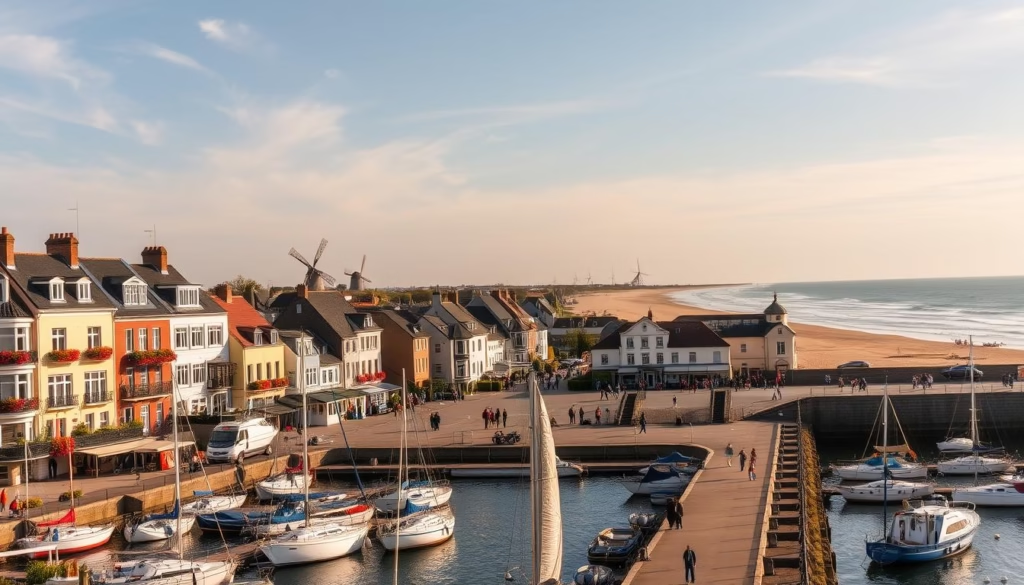
De Haan’s Timeless Elegance
This Victorian-era gem bans buildings taller than palm trees. Stroll past candy-colored Belle Époque villas with turrets and stained glass – architectural heirlooms from Europe’s first seaside tourism boom. Locals guard their car-free center fiercely, where ice cream shops outnumber chain stores.
Seaside Adventures by Tram and Foot
The Kusttram delivers 67 stops of coastal magic. Hop off at Oostduinkerke to watch fishermen wade into waves on horseback – a 500-year-old technique now protected by UNESCO. Summer transforms the shore into a playground for:
- Sunset beach walks through bioluminescent plankton blooms
- Boat tours departing from Zeebrugge’s revitalized harbor
- Dune hikes revealing rare orchids and nesting plovers
Prefer to wander freely? The entire coast connects via a walkable promenade. Stop for crispy frites at family-run cabanas, then hunt for amber treasures left by tidal currents. As fisherman Yannick De Vos shares:
“Our coast remembers its roots – you’ll find more nets than jet skis here.”
Urban Delights in Ghent and Bruges
Two Flemish treasures showcase Belgium’s talent for blending medieval splendor with modern vitality. Their stone streets hum with artistic legacy and youthful innovation, offering distinct flavors of old town charm.
Picturesque Canals and Quaint Streets
Bruges’ waterways mirror Gothic facades like liquid silver. Boat tours glide past 15th-century almshouses where beguines once tended herb gardens. Locals swear the morning mist carries whispers of merchants who traded wool here six centuries ago.
Ghent’s Graslei harbor buzzes with cafe chatter beneath stepped gables. Students cycle across cobblestones worn smooth by generations, their laughter echoing off medieval guild halls. As historian Pieter De Koninck observes:
“These cities didn’t preserve history – they never stopped living it.”
Historic Museums and Art Collections
The Groeningemuseum’s fine arts collection reveals why Bruges birthed Flemish Primitive painting. Jan van Eyck’s glowing altarpieces share space with surrealist Magritte works – a timeline of genius spanning 600 years.
Ghent counters with Saint Bavo’s Cathedral, home to the revolutionary Ghent Altarpiece. By night, former socialist meeting halls like Vooruit host experimental concerts. This fusion of sacred and secular museums defines Belgium’s cultural DNA.
| Feature | Bruges | Ghent |
|---|---|---|
| Signature Art | Flemish Primitives | Gothic Altarpieces |
| Cultural Vibe | Time-capsule serenity | Student-fueled energy |
| Must-See | Groeningemuseum | Gravensteen Castle |
Local Experiences: Authentic Cuisine & Tradition
Belgian culture thrives at its town squares and family-run eateries. Food here isn’t just fuel – it’s a way to connect with centuries of craftsmanship. Locals debate fry sauces like sommeliers discuss wine, while chocolatiers perfect recipes passed through generations.
Belgian Specialties: Fries, Waffles, and Chocolate
True frites start at frietculture – hole-in-the-wall stands serving crispy potatoes in paper cones. Liège waffles, studded with caramelized sugar pearls, pair perfectly with street-side espresso. For sweet things, explore 10 essential Belgian dishes, from shrimp croquettes to beer-braised stews.
Hidden Cafes and Artisan Markets
Brussels’ Place du Jeu-de-Balle flea market overflows with vintage treasures and fresh speculoos spices. At Délirium Café, sample rare Trappist ales beneath ceilings plastered with beer labels. This way of savoring – slowly, joyfully – turns meals into lasting memories.
